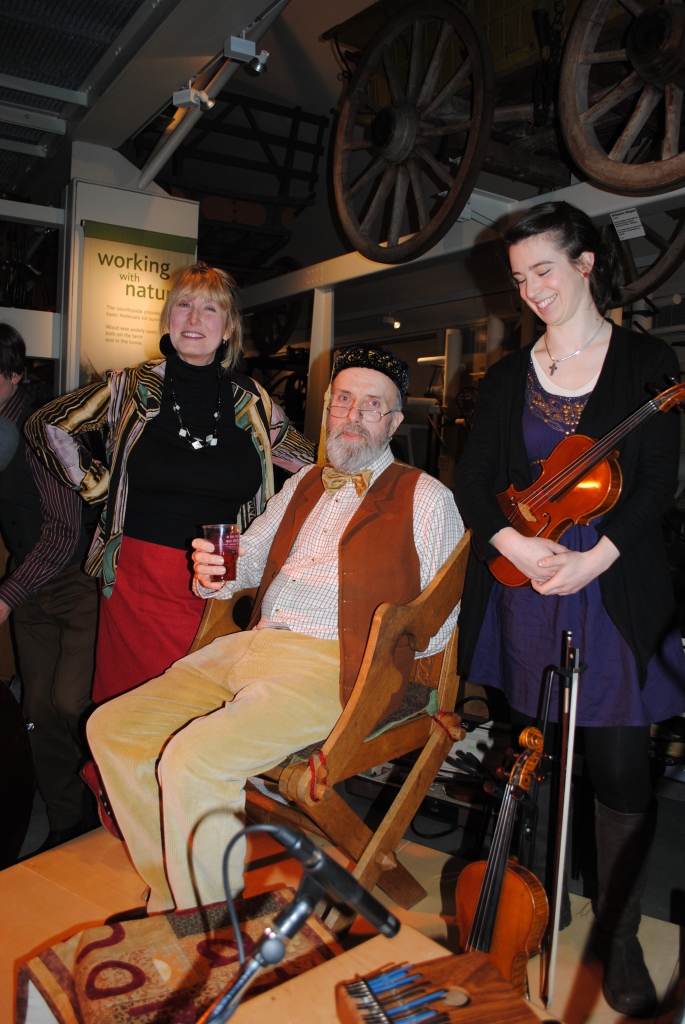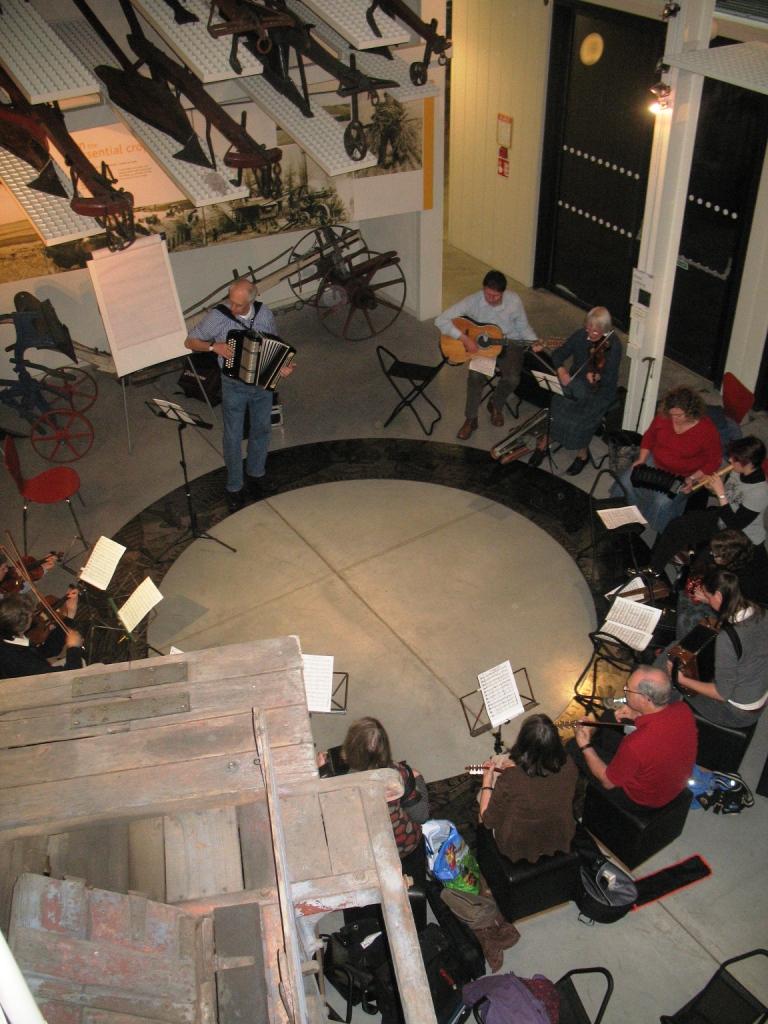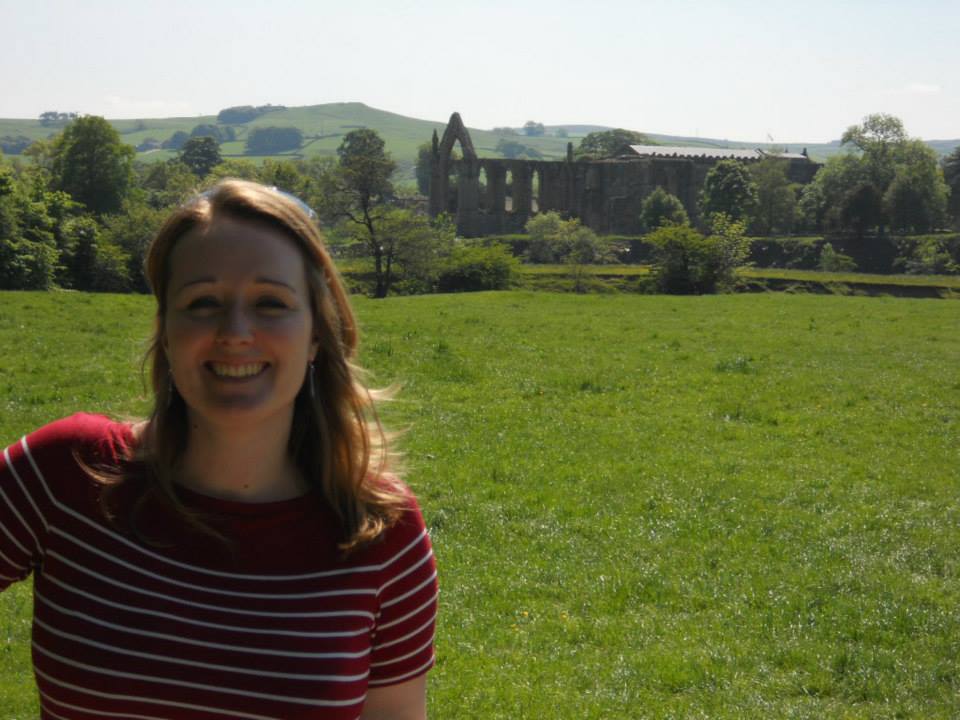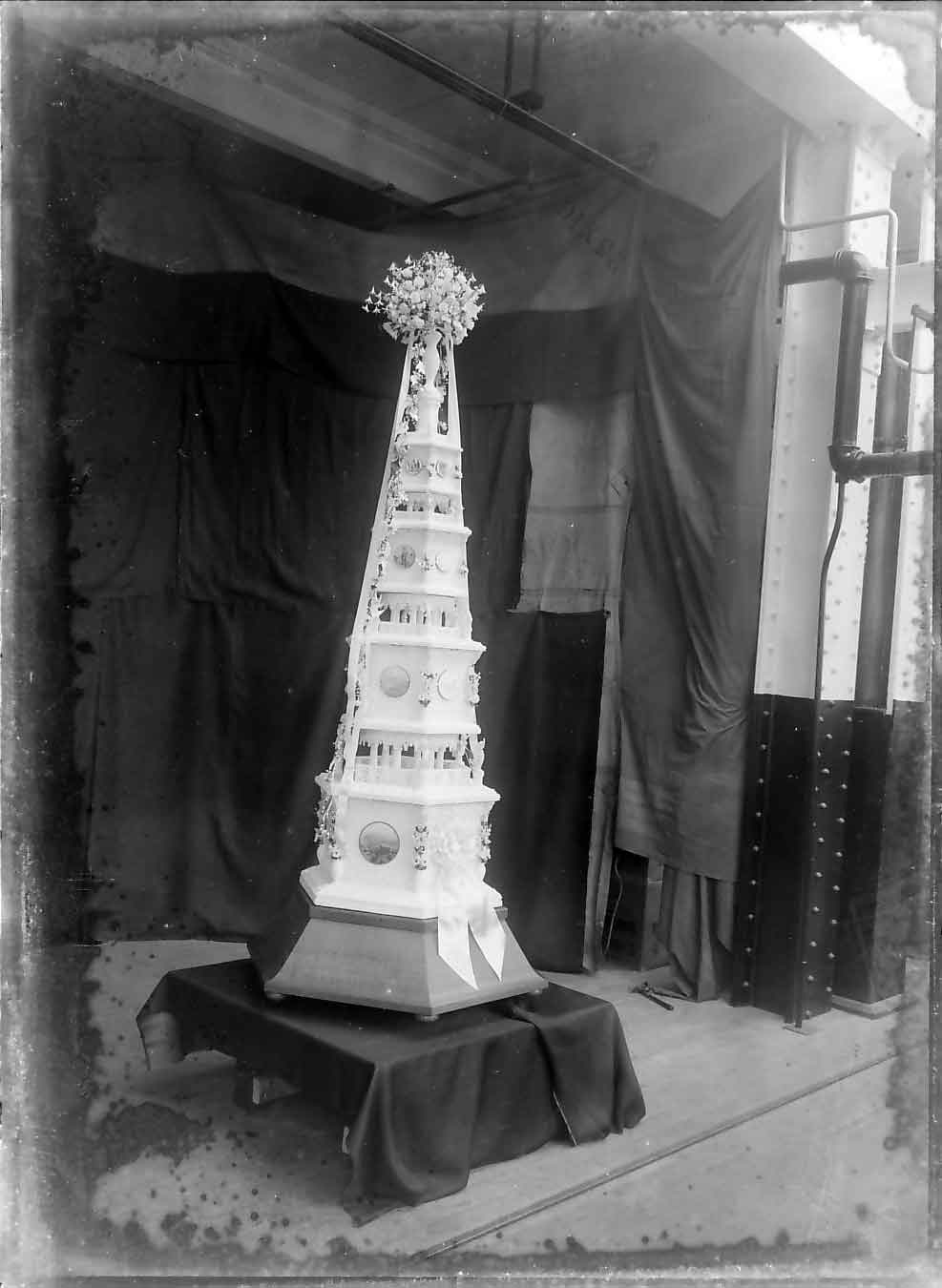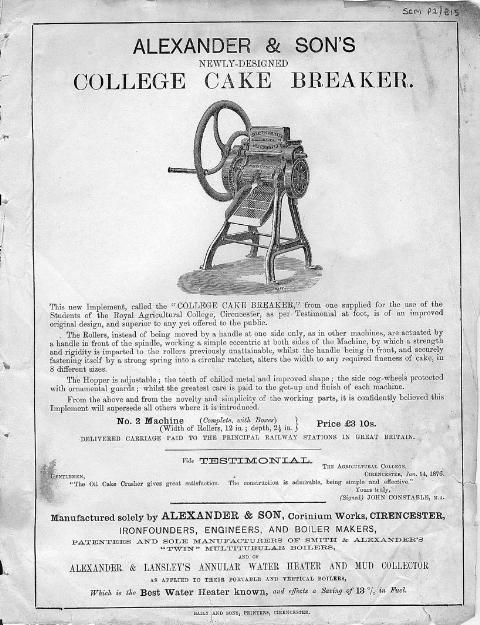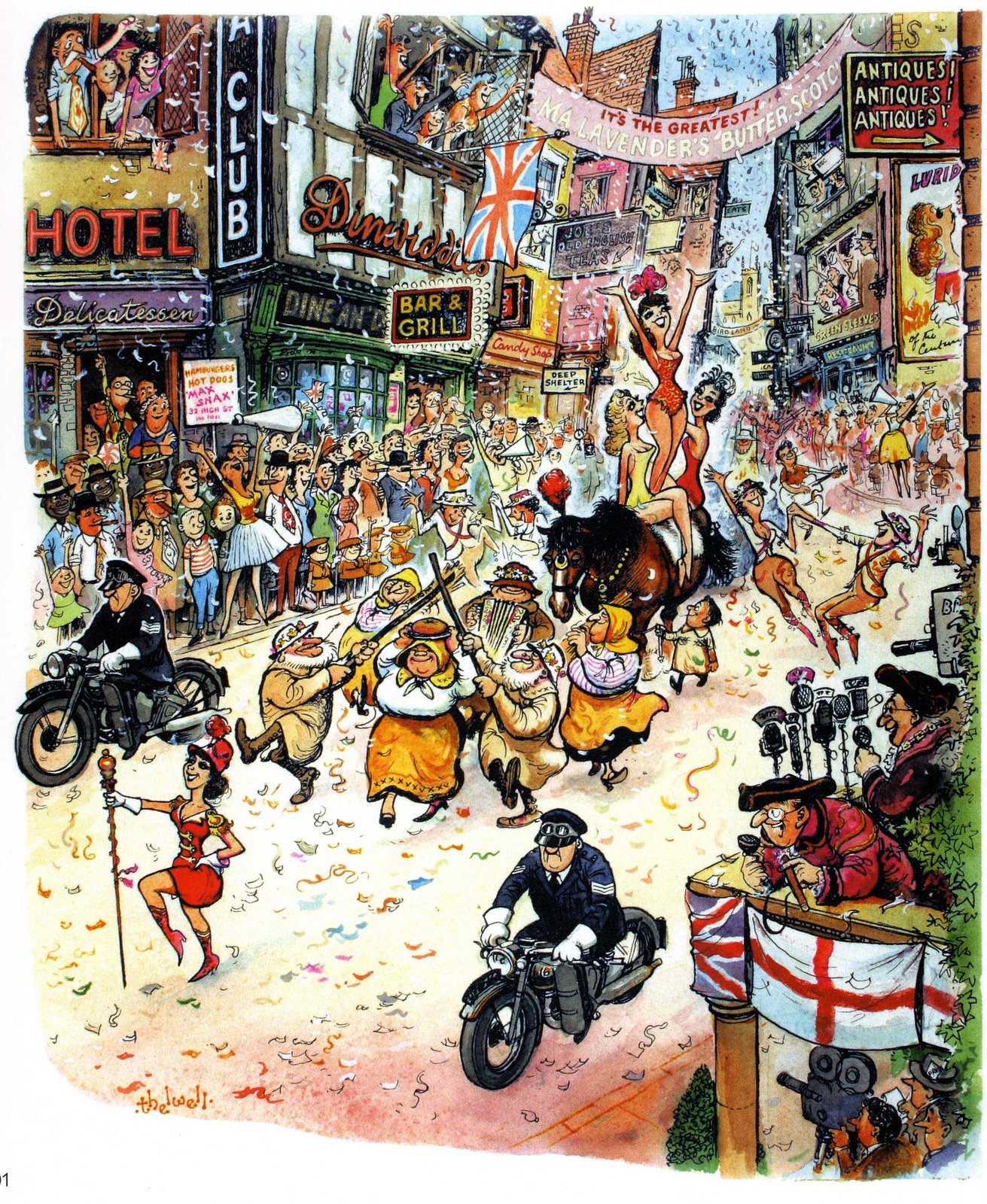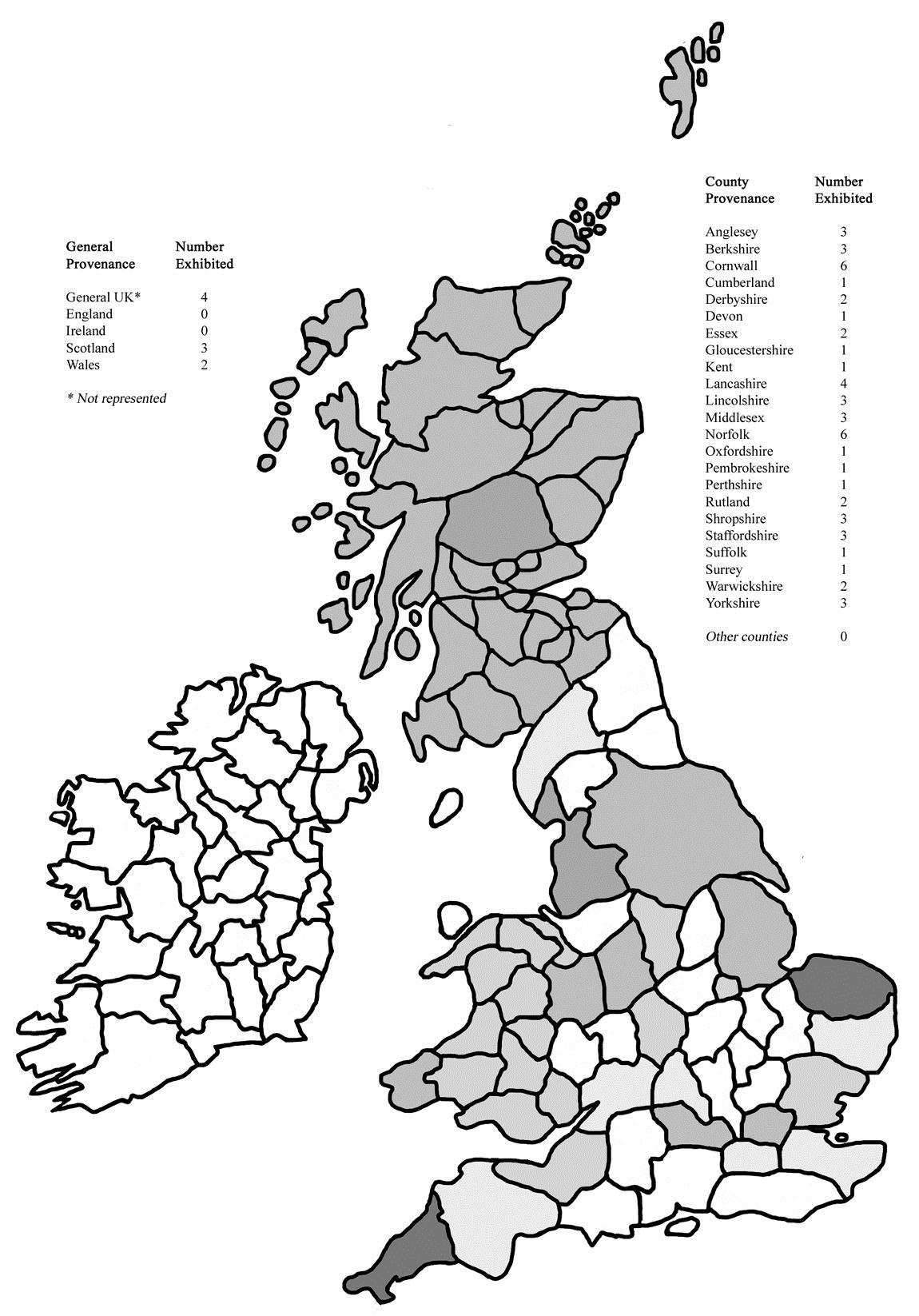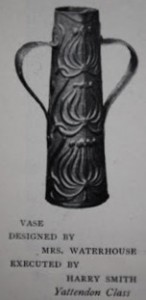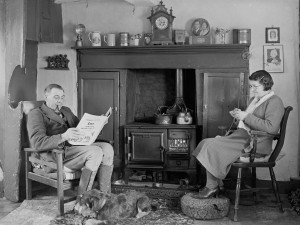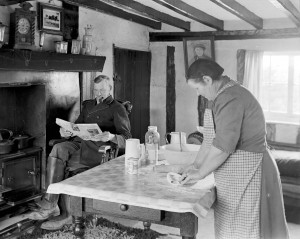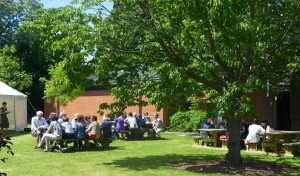Hilary James approached MERL over four years ago about the possibility of bringing folk music to the Museum, and with the obvious connections between English folk music and our collections, we welcomed the idea of a series of concerts, workshops and talks set against the backdrop of the Museum. As we prepare for ‘A Day with the Mandolinquents,’ the next event in the current series, Hilary James has taken time out to reflect on ‘Songs, stories and traditions’ at the Museum…
I was strolling back up Redlands Road one afternoon, past my old University home, St Andrews Hall of residence, when I did a double take and read a new sign outside announcing the Museum of English Rural Life!
As a student in the 1970s I ran the University Folk Club. With the help of a University Arts Grant we had our pick of the finest up-and-coming folk musicians of the day, a list which included future luminaries such as Richard Thompson, Planxty, Maddy Prior and Christy Moore. This was long before MERL moved to its current home. Up until 2001 it was housed in a few tightly crammed huts on the edge of the Whiteknights campus. The folk club met for many years in a soulless cafe above the Students Union, a venue lacking the perfect atmosphere and charm of today’s MERL.
I’ve hosted Hilary James & friends: Songs, Stories & Traditions for four years – this time with the help of grants from the University Arts Committee. MERL is the perfect home for such a project; it’s been a wonderful opportunity to rediscover the music and folk tales so closely entwined in the social fabric and history of rural England and to revisit the songs I first heard as a student at the University Folk Club.
It’s been a treat too to invite and collaborate with other like-minded musicians and storytellers. Here’s a look back at just some of the friends I’ve invited to join me as special guests…
Vocal and instrumental quintet, Magpie Lane embodied the spirit of Thomas Hardy’s English village band with their well researched and extensive repertoire of traditional song and their engaging, unpretentious delivery. Five fine musicians all with strong voices filled MERL with the infectious joy of their vocal harmonies and clever instrumental accompaniments.
Karen Tweed, “Accordian Queen” packed in a concert, talk and workshop taking us on a whirlwind tour of musical styles and tunes visiting Scandinavia, Quebec and Wales before heading back home to England. She’s an inspiring musician – I didn’t realise so much lyricism and poetry as well as dynamism could be found in the humble accordian, but then it’s always down to the player, not the instrument.
Tim Healey, social historian, freelance writer, record producer and BBC broadcaster, gave us an illustrated talk on the ‘Green Man’ in 2010 returning by popular demand in 2011 with ‘Sex, Drink and Death in 17th Century England’. Simon Mayor and I provided the music to illustrate these talks – an intriguing project to research – the folk tradition is littered with tales of debauchery, tragedy and death!
Taffy Thomas, the country’s first Storytelling Laureate visited in 2012 wearing his splendid “tale coat”, elaborately embroidered with scenes from his many stories.
Reading born BBC Young Tradition Award Winner, Luke Daniels, had an eager group of musicians for his tin whistle workshop which took place in the heart of the Museum.
Simon and I joined Luke Daniels for a couple of songs and tunes from the north-east. We’ve known Luke since he was a nine year old wiz on the bodhran (Irish drum). His Mum, Sara is a well-respected singer of Irish folksongs and his Dad, Les was a fine whistle player. In 2012 Luke transplanted his young family to Glasgow where he’s continuing to enthuse children and young people with his love of traditional music.
Paul Sartin from Bellowhead (we couldn’t afford the full band!) and Paul Hutchinson were our guests as Belshazzar’s Feast in June 2010, blending dazzling musicianship on accordian, oboe and fiddle with some very quirky humour. They also gave an informal session in the garden – in the early evening sunshine!
The two Pauls, along with Ed Quick, Richard Collins and Simon Mayor, had recently played on my album English Sketches, a collection of folksongs and poetry settings drawing on my first two years of the MERL project and a decade spent touring villages in far-flung corners of England for the National Rural Touring Forum.
My sketch pad or watercolour postcard book (brilliant for sending mementos) was always on hand to capture the views – usually from the car windows! The sketches became part of the CD project, finding their way into the booklet and disc. Having Belshazzar’s Feast as guests also offered us all a chance to preview some of these songs.
John Kirkpatrick (BBC Victorian Farm) was amazed to find he was singing about a cart…beneath a cart! John gave an inspiring hands-on folk band workshop for a wide range of musical abilities and instruments.
I’d like to thank Alison Hilton for her enthusiasm and support in all aspects of planning and promotion, as well as all the staff and volunteers at MERL. And thanks too to my friends David and Helen Maggs at West Berkshire Brewery for providing the beer for the bar at each event. Thanks also to Simon Mayor who arranged much of the music for my contributions and collaborations.
‘A Day with the Mandolinquents’ – the next event in the ‘Songs, stories and traditions’ series takes place on Sunday 7th July. Join mandolin maestro Simon Mayor, Gerald Garcia, conductor of the National Youth Guitar Ensemble and Hilary James, for workshops from 1-5pm or just come and enjoy the ‘wit and sparkle’ of this eclectic ensemble in their evening concert in the MERL garden – bring a picnic from 6pm, concert at 7pm. For details, visit the MERL website…




